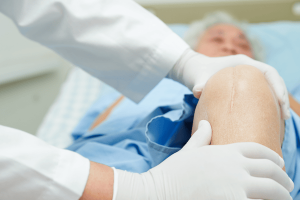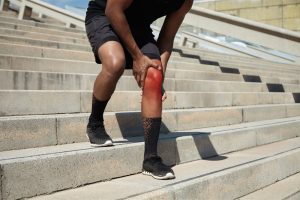Total hip replacement is a surgical procedure which replaces a damaged hip joint with an artificial one made up of either metal or ceramic. The artificial joint is implanted into the healthy parts of the bone and it relieves pain, regain range of motion and get back to their usual daily activities without any limitations. As with all surgery, there are risks and side effects associated.
Stiffness of joint
After surgery, scar tissue will start to form around the joint as healing take place. Scar tissue is part of the healing process but it will affect the function of the surrounding soft tissues. That will lead to pain, stiffness and restricted mobility.
Deep Vein Thrombosis (DVT)
Blood clots may develop in the deep veins of the back of the lower legs in some patients after surgery. This will block the normal flow of blood throughout the affected area and will cause swelling and tenderness. There is a 4% risk of developing DVT after surgery but this can be avoided by performing foot and ankle exercises immediately after surgery to allow better blood flow. Patients will suffer discomfort and medical attention should be sought immediately.
Infection
A rare side effect is infection. Bacteria could get into the artificial joint area and trigger an infection. However this is rare due to the sterile environment in the surgical theatre but is not impossible. If patients experience fever of more than 38C, chills and discharge of liquid, medical attention should be sought immediately.
Nerve injury
Nerve injuries are rare cases. The nerves surrounding the surgery site could be accidentally injured during surgery and this will cause numbness and a tingling sensation could be felt. Nerve injuries are often temporary and will improve over time. However in serious cases, it could be permanent and the patient may not have any sensation in that site again.
Different leg length
Hip replacement surgery can possibly alter the leg length by a very small different which is hardly noticeable in most cases. This is due to wear and tear destroying some of the bone causing a reduction in bone length. However in more serious cases, it can be easily solved by placing prescription inserts in the shoes.
Loosening of the prosthesis
Hip replacement surgery is not new and the materials used are of better quality and can last for a longer period of time. However, wear and tear and loosening of components can still occur after 10 to 15 years. Depending on the daily activities of the patient, wear and tear may be accelerated. A second surgery is not recommended as it is not as successful as the first and there will be more complications.








